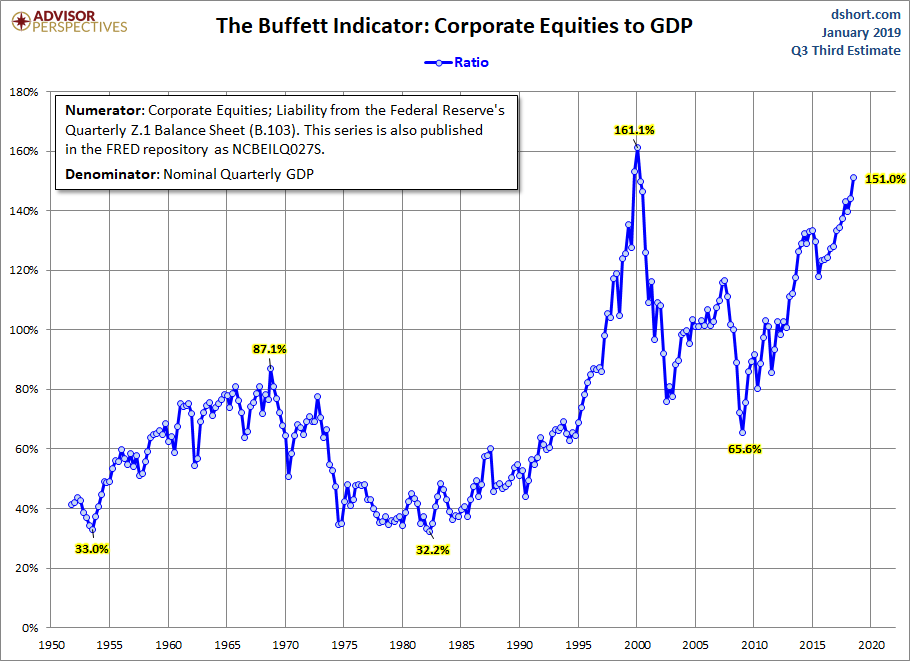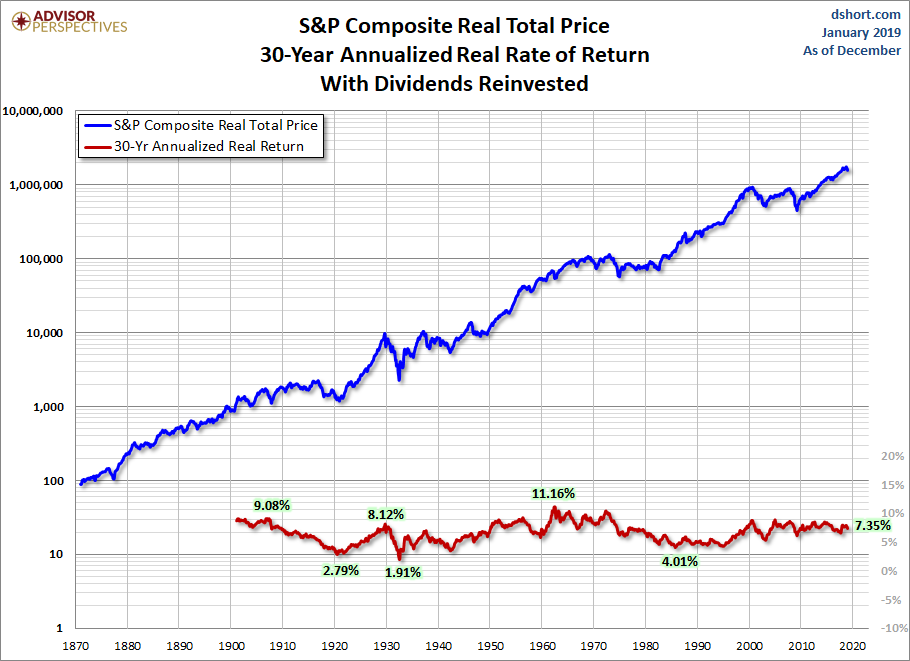Valuations
Are Crucial to
Investment Success
The wealthy investor tends to be
an expert on values. When bonds are cheap and bond yields are irresistibly
high, he buys bonds. When stocks are on the bargain table and stock yields are
attractive, he buys stocks. When real estate is a great value, he buys real
estate. When great art or fine jewelry or gold is on the "give away"
table, he buys art or diamonds or gold. In other words, the wealthy investor
puts his money where the great values are.
And if no outstanding values are available,
the wealthy investor waits. The wealthy
investor knows what he is looking for, and he doesn't mind waiting months or
even years for his next investment (they call that patience).
The
late Dick Russel - Dow Theory Letters





DYI: The swings in returns going from
a 10 year hold and even a 30 year hold – [stocks held or bought and then go to
sleep like Rip Van Winkle awaken after x years] – will be huge all depending on
valuations at entry. The 30 has a return
real return from a sub atomic low of 1.91% average annual return to a high of
11.16 and everything in between. Place
too much hard earned dollars at high valuations your returns will be anemic. 15 year holding periods has multiple losses. When an individual has only 20 to 30 years to
put it all together valuations become absolutely crucial.
Ben
Graham’s Corner – DYI updates once per month – is made for those who are dollar
cost averaging such as the typical 401k owner.
Currently stocks valuations are so insanely high an investor will be buying
bonds. Once valuations improve you can
begin systematically purchasing stocks and once valuations drop significantly
sell off the bonds and purchase stocks on a lump sum basis. Old Ben’s formula is perfect for dollar cost averaging.
Ben Graham's Corner
Margin of Safety!
Central Concept of Investment for the purchase of Common Stocks.
"The danger to investors lies in concentrating their purchases in the upper levels of the market..."
Stocks compared to bonds:
Earnings Yield Coverage Ratio - [EYC Ratio]
EYC Ratio = 1/PE10 x 100 x 1.1 / Bond Rate
1.75 plus: Safe for large lump sums & DCA
1.30 plus: Safe for DCA
1.29 or less: Mid-Point - Hold stocks and purchase bonds.
1.00 or less: Sell stocks - Purchase Bonds
Current EYC Ratio: 0.95 (rounded)
As of 01-01-19
Updated Monthly
Updated Monthly
PE10 as report by Multpl.com
Bond Rate is the rate as reported by
Vanguard Long-Term Investment-Grade Fund Investor Shares (VWESX)
DCA is Dollar Cost Averaging.
Lump Sum any amount greater than yearly salary.
PE10 ..........27.51
Bond Rate...4.21%
Lump Sum any amount greater than yearly salary.
PE10 ..........27.51
Bond Rate...4.21%
Over a ten-year period the typical excess of stock earnings power over bond interest may aggregate 4/3 of the price paid. This figure is sufficient to provide a very real margin of safety--which, under favorable conditions, will prevent or minimize a loss......If the purchases are made at the average level of the market over a span of years, the prices paid should carry with them assurance of an adequate margin of safety. The danger to investors lies in concentrating their purchases in the upper levels of the market.....
DYI
No comments:
Post a Comment